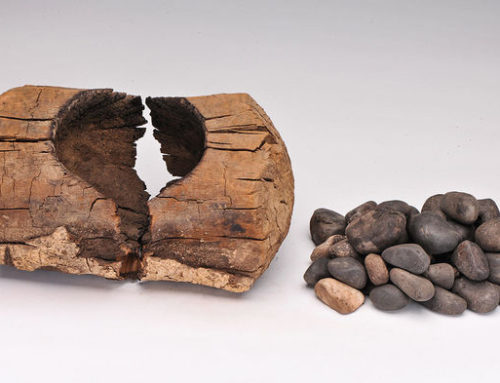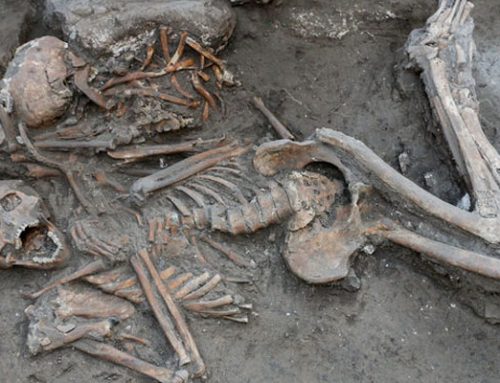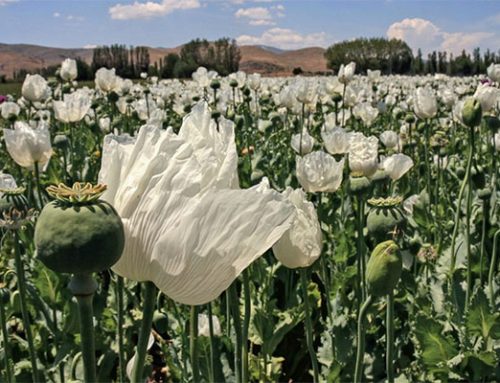ARCHAEOLOGY IN CHINA
In the summer of 1998, a reservoir in a rural area of Hunan in southern China dried up. As the water receded, local farmers found ancient pottery and porcelain from the 10th to 13th century C.E. Song Dynasty, which produced some of the world’s finest ceramic art. Within a few weeks, hundreds of looters were openly digging at the site. Despite an outcry from a television reporter and a few cultural-heritage specialists, local officials refused to intervene. It was not until the following February that police arrived to stop the illegal digs, arrest the culprits, and clear the way for a team of archaeologists to save what they could.
In a land chock-full of wealthy tombs and poor farmers, grave robbing is an ancient tradition. But in the past decade, China has tightened its laws against looting, a reflection of changing attitudes toward archaeological treasures (see main text). Now those who destroy the country’s past face jail terms and even the death penalty, although no one appears to have actually been executed for looting. Earlier this year, the United States and China agreed to work together to prevent smuggling of looted Chinese antiquities. “The situation in China has improved dramatically in recent years,” says Stefan Gruber, a lawyer at the University of Sydney in Australia, who follows the Chinese situation closely.
But he adds that although “the central government has good ideas, the local governments do not necessarily follow their orders.” Archaeologist and China expert Lothar von Falkenhausen of the University of California, Los Angeles, remains deeply concerned. “The looters are absolutely everywhere,” he says. “Archaeologists can’t keep up, and the looting often takes place with the connivance of local authorities.” Von Falkenhausen adds that the new U.S.–China agreement merely shuts American dealers out of a market increasingly driven by wealthy Chinese collectors.
The pace of destruction is difficult to quantify, but it is clearly still taking place. In the northeast, for example, between 4000 and 15,000 tombs from the Neolithic Hongshan culture (see p. 930), which produced rich jades in fantastic animal shapes 5000 years ago, have been damaged or destroyed by looters during the past decade, says He Shuzhong of the National Administration on Cultural Heritage in Beijing. In the southern province of Hubei, 2000-year-old graves filled with jewelry, documents written on bamboo, and other artifacts have been stolen. “When an archaeological team finally went in, there was nothing left to save,” says one archaeologist familiar with the destruction.
In response to such damage, museum and site security has recently improved. At the Yanghai cemetery in the remote western province of Xinjiang, for example, looters who a decade ago helped themselves to jewelry in the 3000-year-old graveyard are now stymied by a high fence, locked gate, and live-in caretaker. Recent high-profile cases, coupled with educational initiatives, are making China’s vast population aware that looting is illegal and unpatriotic.
Although strict laws likely dissuade many looters, they can have a perverse effect. Local farmers near Erlitou, one of China’s oldest urban centers (see p. 934), now hesitate to bring artifacts found during plowing to archaeologists, perhaps fearing stiff penalties, says Chen Guoliang, an assistant researcher at the site.
Clicking on his laptop in his office at the Erlitou dig house, Chen pulls up several images of similar turquoise inlaid bronze plaques that appear to be in a style arguably unique to Erlitou. The use of these elaborate objects remains unclear, and archaeologists are eager to find more in context. But only one was legally excavated from the site. How and when the others were found remains a mystery, though Chen believes that they almost certainly came from Erlitou. Today, the other plaques reside in public and private collections around the world, from the Miho Museum in Japan to Harvard University in the United States. (Many museums have taken at face value claims by sellers that artifacts were legally exported.) Once taken out of their context and sold, says Chen, such artifacts— whose provenance is difficult to verify— no longer have a story about China’s heritage worth telling.
SCIENCE VOL 325 21 AUGUST 2009




